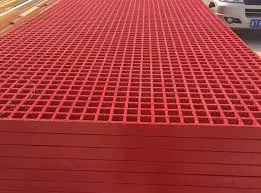
-
 Afrikaans
Afrikaans -
 Albanian
Albanian -
 Amharic
Amharic -
 Arabic
Arabic -
 Armenian
Armenian -
 Azerbaijani
Azerbaijani -
 Basque
Basque -
 Belarusian
Belarusian -
 Bengali
Bengali -
 Bosnian
Bosnian -
 Bulgarian
Bulgarian -
 Catalan
Catalan -
 Cebuano
Cebuano -
 China
China -
 China (Taiwan)
China (Taiwan) -
 Corsican
Corsican -
 Croatian
Croatian -
 Czech
Czech -
 Danish
Danish -
 Dutch
Dutch -
 English
English -
 Esperanto
Esperanto -
 Estonian
Estonian -
 Finnish
Finnish -
 French
French -
 Frisian
Frisian -
 Galician
Galician -
 Georgian
Georgian -
 German
German -
 Greek
Greek -
 Gujarati
Gujarati -
 Haitian Creole
Haitian Creole -
 hausa
hausa -
 hawaiian
hawaiian -
 Hebrew
Hebrew -
 Hindi
Hindi -
 Miao
Miao -
 Hungarian
Hungarian -
 Icelandic
Icelandic -
 igbo
igbo -
 Indonesian
Indonesian -
 irish
irish -
 Italian
Italian -
 Japanese
Japanese -
 Javanese
Javanese -
 Kannada
Kannada -
 kazakh
kazakh -
 Khmer
Khmer -
 Rwandese
Rwandese -
 Korean
Korean -
 Kurdish
Kurdish -
 Kyrgyz
Kyrgyz -
 Lao
Lao -
 Latin
Latin -
 Latvian
Latvian -
 Lithuanian
Lithuanian -
 Luxembourgish
Luxembourgish -
 Macedonian
Macedonian -
 Malgashi
Malgashi -
 Malay
Malay -
 Malayalam
Malayalam -
 Maltese
Maltese -
 Maori
Maori -
 Marathi
Marathi -
 Mongolian
Mongolian -
 Myanmar
Myanmar -
 Nepali
Nepali -
 Norwegian
Norwegian -
 Norwegian
Norwegian -
 Occitan
Occitan -
 Pashto
Pashto -
 Persian
Persian -
 Polish
Polish -
 Portuguese
Portuguese -
 Punjabi
Punjabi -
 Romanian
Romanian -
 Russian
Russian -
 Samoan
Samoan -
 Scottish Gaelic
Scottish Gaelic -
 Serbian
Serbian -
 Sesotho
Sesotho -
 Shona
Shona -
 Sindhi
Sindhi -
 Sinhala
Sinhala -
 Slovak
Slovak -
 Slovenian
Slovenian -
 Somali
Somali -
 Spanish
Spanish -
 Sundanese
Sundanese -
 Swahili
Swahili -
 Swedish
Swedish -
 Tagalog
Tagalog -
 Tajik
Tajik -
 Tamil
Tamil -
 Tatar
Tatar -
 Telugu
Telugu -
 Thai
Thai -
 Turkish
Turkish -
 Turkmen
Turkmen -
 Ukrainian
Ukrainian -
 Urdu
Urdu -
 Uighur
Uighur -
 Uzbek
Uzbek -
 Vietnamese
Vietnamese -
 Welsh
Welsh -
 Bantu
Bantu -
 Yiddish
Yiddish -
 Yoruba
Yoruba -
 Zulu
Zulu
grp products for steel smelting plant
Innovations in GRP Products for Steel Smelting Plants
In the ever-evolving landscape of industrial manufacturing, the steel smelting industry stands out for its critical role in modern infrastructure and construction. As the demand for steel continues to rise globally, so does the necessity for advancements in the technology and materials used in steel smelting plants. Among the modern innovations emerging in this sector are Glass Reinforced Plastic (GRP) products, which are reshaping the operational efficiency and safety standards within these facilities.
GRP, also known as fiberglass, is a composite material made of plastic reinforced by fine glass fibers. This unique composition endows GRP products with remarkable properties that make them particularly appealing for use in steel smelting plants. One of the most notable advantages of GRP is its excellent corrosion resistance. Steel smelting involves extreme temperatures and aggressive chemical processes, which can lead to significant wear and damage to traditional materials. GRP components, however, can withstand these harsh conditions, thereby extending their lifespan and reducing maintenance costs.
Innovations in GRP Products for Steel Smelting Plants
The versatility of GRP allows for a variety of product implementations within steel smelting plants. For instance, GRP can be utilized in the construction of ducting systems, tanks, and piping solutions. These applications benefit from the non-conductive properties of GRP, which serve to enhance safety by reducing the risk of electrical hazards—an essential consideration in environments where flammable gases and high voltages exist.
grp products for steel smelting plant

Moreover, GRP products are increasingly recognized for their sustainability. As global industries pivot towards more eco-friendly practices, steel smelting plants have begun to consider the environmental impact of the materials they use. GRP is commendable in this aspect as it is produced with a lower carbon footprint compared to traditional materials, and many GRP products are recyclable, aiding in waste reduction initiatives.
Another pivotal advantage of GRP is its design flexibility. Customization options available with GRP can cater to specific operational needs and configurations within a smelting plant. Manufacturers can create tailored solutions that enhance process efficiency, improve workflow, and address unique challenges.
The adoption of GRP products in steel smelting plants indicates a significant shift towards innovative materials that not only improve operational capabilities but also prioritize safety and environmental responsibility. As the steel industry continues to advance, the utilization of GRP stands as a testament to the potential for composite materials to redefine industrial standards. Ultimately, investing in GRP technology is not merely a strategic operational decision; it is a progressive step towards a more sustainable and efficient future in steel production.
In conclusion, as we look toward the future of steel smelting, GRP products will undoubtedly play a pivotal role in shaping an industry that is both resilient and adaptable to the challenges of modern manufacturing. The integration of these materials presents an exciting opportunity for progress and sustainability in one of the world’s most crucial industries.
Latest news
-
Exploring the Benefits of Top Hammer Drifter Rods for Enhanced Drilling PerformanceNewsJun.10,2025
-
High-Precision Fiberglass Winding Machine for GRP/FRP Pipe Production – Reliable & Efficient SolutionsNewsJun.10,2025
-
FRP Pipes & Fittings for Shipbuilding - Corrosion-Resistant & LightweightNewsJun.09,2025
-
Premium FRP Flooring Solutions Durable & Slip-ResistantNewsJun.09,2025
-
Premium Fiberglass Rectangular Tanks Durable & Lightweight SolutionNewsJun.09,2025
-
Tapered Drill String Design Guide Durable Performance & UsesNewsJun.09,2025









